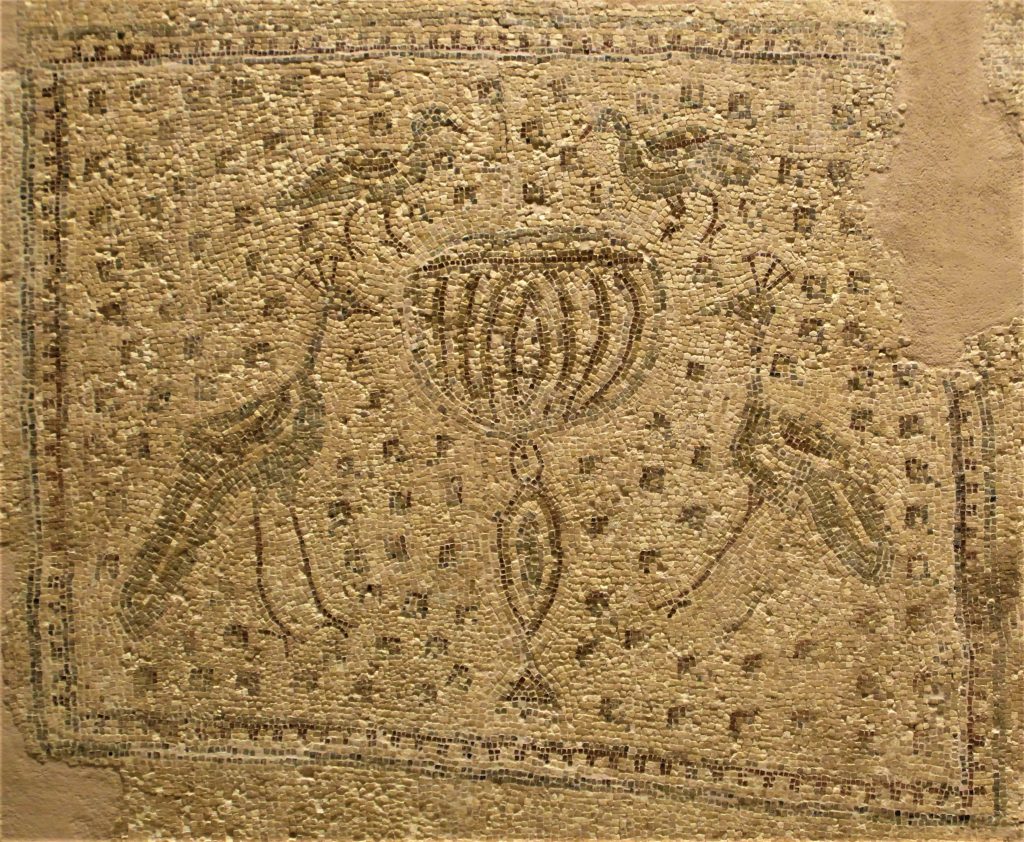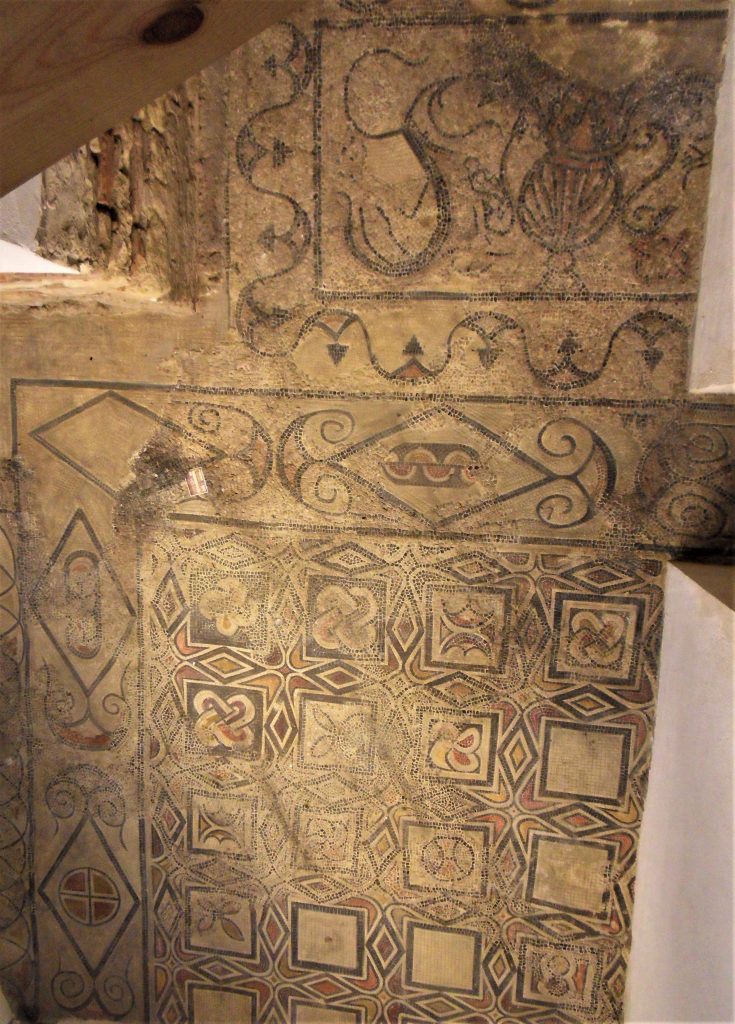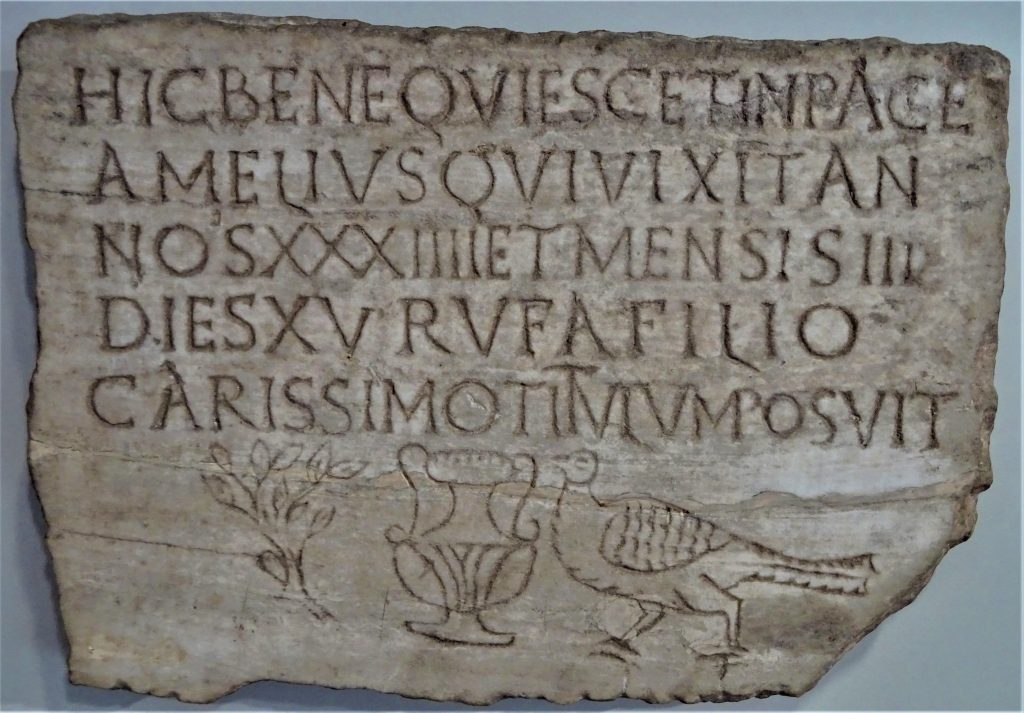Born and grown up in the Netherlands, I studied first theology and later psychology. Nowadays I work as a psychologist in public mental healthcare. Luckily, my job leaves me some opportunity to travel, and during those travels I like to visit archaeological places and excavation areas as well as archaeological museums.
A few years ago I visited Heraclea Lyncestis, a former Roman city at the Via Egnatia, close to Bitola in present day North Macedonia. There I admired the beautiful floormosaic in the narthex (western vestibule) of a 5th or 6th century church. The church itself had been in ruins for centuries, but the remains have been dug up and the 6th century mosaic has been saved and made visible to a large extent. The centre of this mosaic is given to the representation of a large fountain-vase set between two deer (see on top of this page). Seeing this I realized that I had seen representations of vases in christian art at other places as well, often wide apart. For instance a mosaicfloor from a church in the Hatay Archaeological Museum in Antakya (former Antioch), in southern Turkey. And also in Córdoba, Spain, in the mosaic floor of a 6th century church, visible a few meters below the floor of the Mezquita – the mosque which had been build above it some centuries later.


Realizing this put me on the trail of the symbolic use of vases in christian art. Visiting several other places and searching through literature, I got the strong impression that the decorative and symbolic use of various types of vases was in fact ubiquitous in early christian art, and widespread throughout the late-Roman and early Byzantine world. However, I also got the impression that this kind of symbolism was somewhat neglected in the literature. In some encyclopaedias you may find a lemma like ‘cantharus’ or ‘fountain of life’, but in many handbooks about early christian or Byzantine art this symbolism is not, or hardly mentioned. Also, when for example a visitor joins a tour of the San Callisto catacombs in Rome, she will first hear an introduction on christian symbols used on fresco’s and epitaphs in those catacombs. Then of course the cross will be mentioned, the Christ-monogram, as well as the symbols of the fish, the dove and the good shepherd. The visitor will hear nothing however about the kantharos as an early christian symbol. Nevertheless, entering the catacombs, one of the first artefacts he will see is a marble epitaph with a beautifully engraved kantharos, a bit like this one, from Trier in Germany.

For reasons like these, because all those representations of vases in christian art are often very beautiful but also somewhat neglected, and also out of historical interest, I decided to make a project of investigating this symbolism, of which this website is a first result.